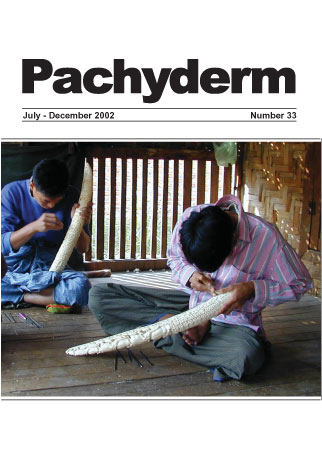Elephant-induced change in woody vegetation and its impact on elephant movements out of a protected area in Zimbabwe
Abstract
This study, tested the hypothesis that vegetation structure and relative abundance of certain plants in remnant forest fragments differ from forests found within protected areas, and that this situation may be a causal factor in elephant dispersal. It monitored the vegetation structure and relative abundance of species in remnant forest fragments in communal land areas (CLs) in the vicinity of the Sengwa Wildlife Research Area (SWRA) and compared results with those from SWRA. Changes in woodlands with elephants are well documented, and although considered generalist feeders elephants may be selective and therefore eliminate preferred woody species locally (Wing and Buss 1970; Anderson 1973; Thomson 1975; Afolayan 1975; Jachmann and Bell 1979; Barnes 1983; Guy 1989). The present study assessed canopy changes from 1966-1993 aerial photography, and species known to be preferred by elephants were monitored for 3 years in transects in the CLs. Species differences can in part be attributed to high elephant densities, fluctuations in numbers in the late 1970s when culling took place, and fire. At present elephant are feeding primarily in the riverine valleys in the CLs, this provides for the least conflict with humans. In the past elephant would have dispersed as food resources became depleted, this may be what is occurring as they move into remnant forest mosaics outside protected areas. Management must consider effects of unchecked elephant population growth with reference to the removal of preferred tree species and the motivation of the animals to come in conflict with crops lands as they search for favoured indigenous species.
Downloads
Published
How to Cite
Issue
Section
License
Copyright (c) 2002 Ferrel V. Osborn

This work is licensed under a Creative Commons Attribution-NonCommercial 4.0 International License.




